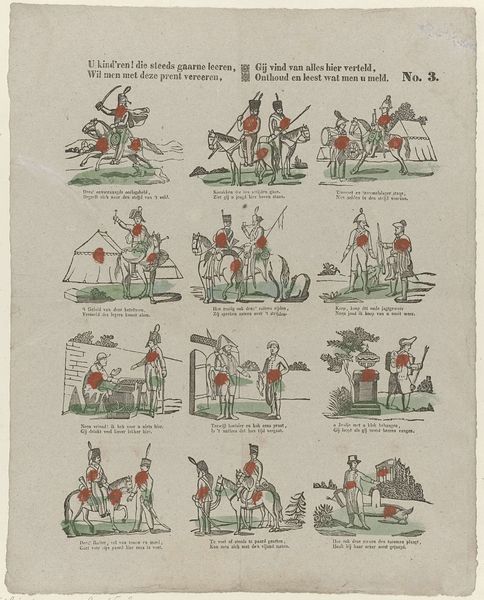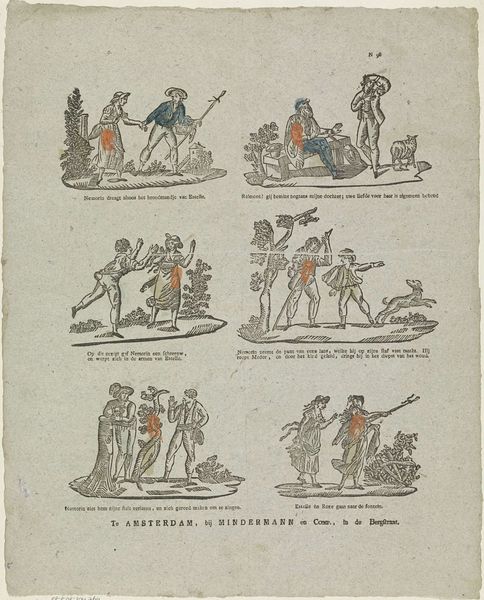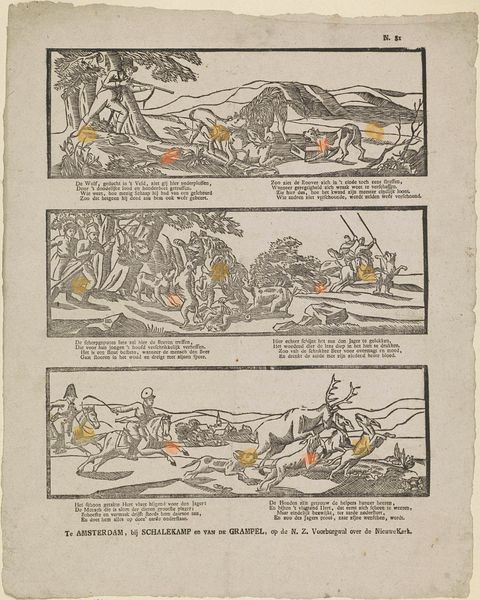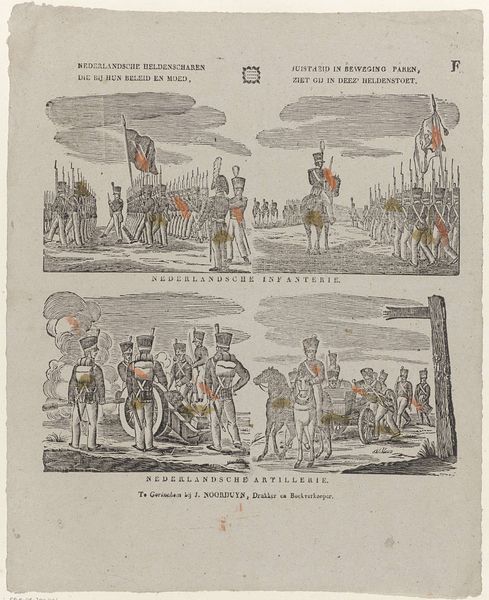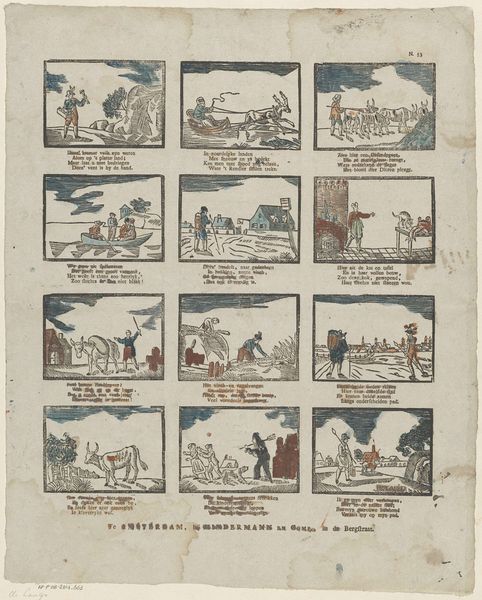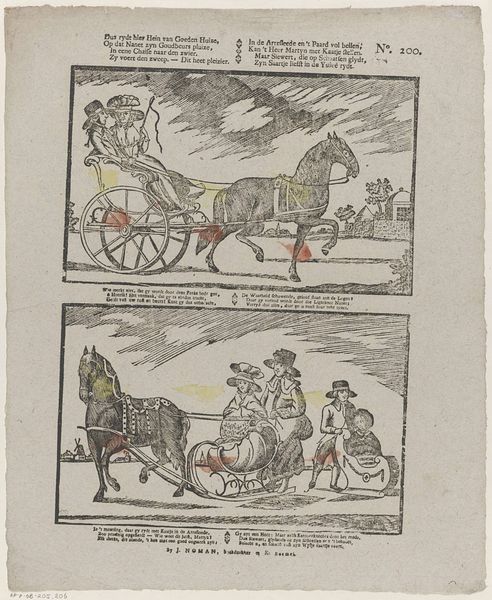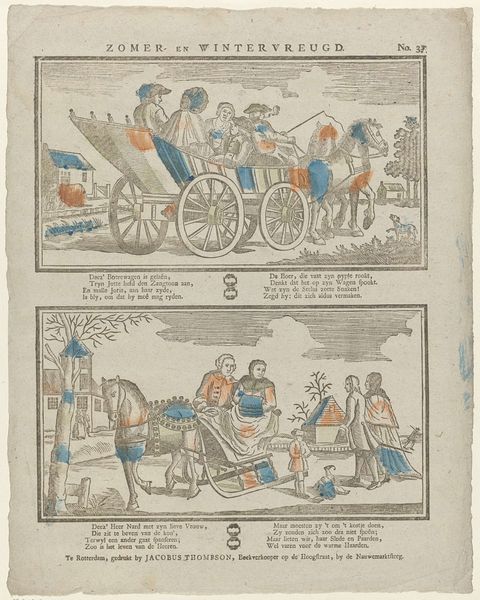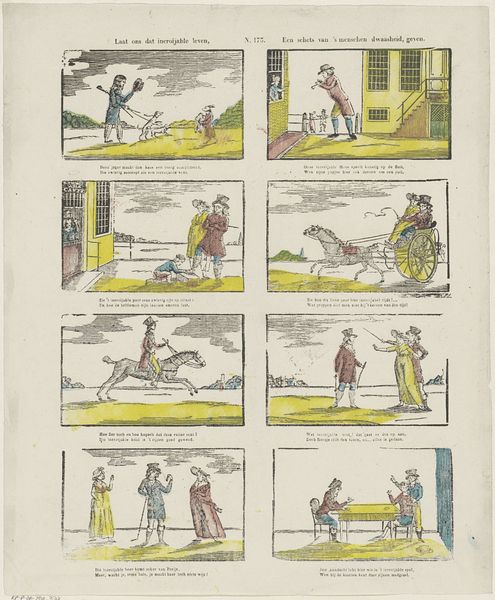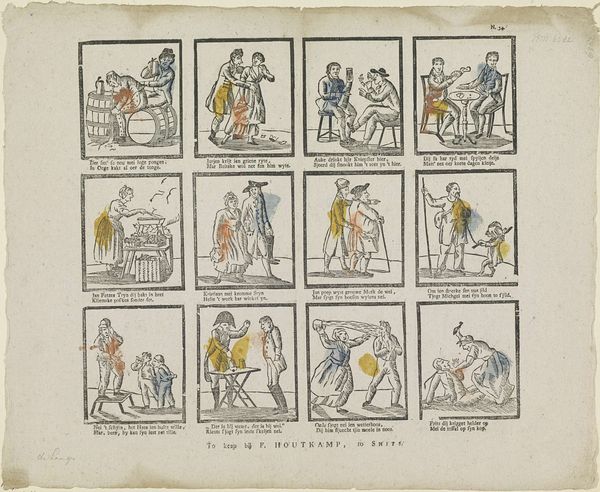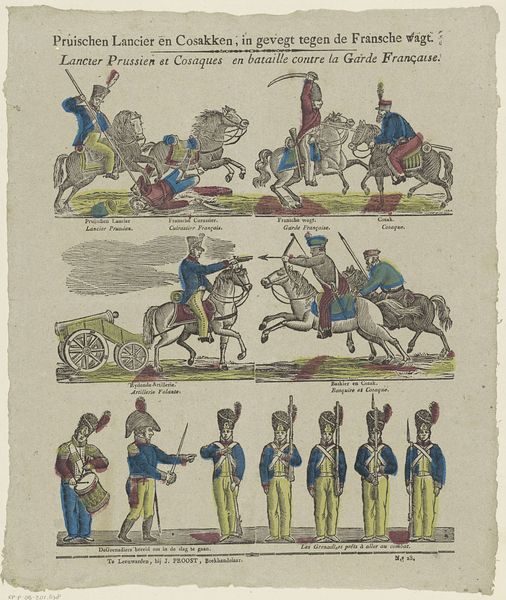
graphic-art, print, engraving
#
graphic-art
#
weapon
#
narrative-art
# print
#
figuration
#
romanticism
#
orientalism
#
line
#
history-painting
#
engraving
Dimensions: height 403 mm, width 335 mm
Copyright: Rijks Museum: Open Domain
Curator: This graphic artwork, made sometime between 1800 and 1854 by Erve H. Rynders, depicts the "Slag van Austerlitz," or "Bataille d'Austerlitz" as it is written in both Dutch and French in the artwork. Editor: My first impression is one of dynamic, almost chaotic energy—though simplified and schematic, the battle scenes create a vibrant sense of movement, with soldiers, horses, and cannons arranged across distinct registers on the page. The colors, while limited, give emphasis where needed. Curator: Absolutely. The artist uses this layered, almost comic strip-like layout to chronicle different stages of the Battle of Austerlitz. By situating this work in its historical moment, it’s important to think about how print media and engravings played a crucial role in shaping public perceptions of historical events and even disseminating nationalistic narratives across different audiences. This battle, of course, one of Napoleon's greatest victories. Editor: The stylized rendering—the rather flat figures, the emphasis on line, and the almost diagrammatic arrangement—contributes to the clarity. I’m intrigued by the almost naive, or perhaps purposefully simplified, presentation of perspective; it makes the chaos manageable, aesthetically palatable. Curator: What I find especially interesting is the blending of visual elements, and to whom they catered. The choice to include text in both Dutch and French signifies its aim to reach a multilingual audience. This was during a period of significant political upheaval in Europe. The visual language borrows elements from Orientalism and Romanticism. It can be seen as both documenting history, and crafting national identity in the face of conflict. Editor: A successful approach! The limited color palette creates a sense of unity across these varied scenes. The rhythmic repetition of the figures, despite the grim subject matter, creates an engaging composition. Curator: Agreed. Thinking about how cultural productions shape and reinforce collective memory and national pride helps us appreciate this as more than just a historical document—it is a cultural artifact, brimming with social meaning and strategic intention. Editor: I will certainly never look at history paintings again without considering all that lies just beneath the lines on the page.
Comments
No comments
Be the first to comment and join the conversation on the ultimate creative platform.

